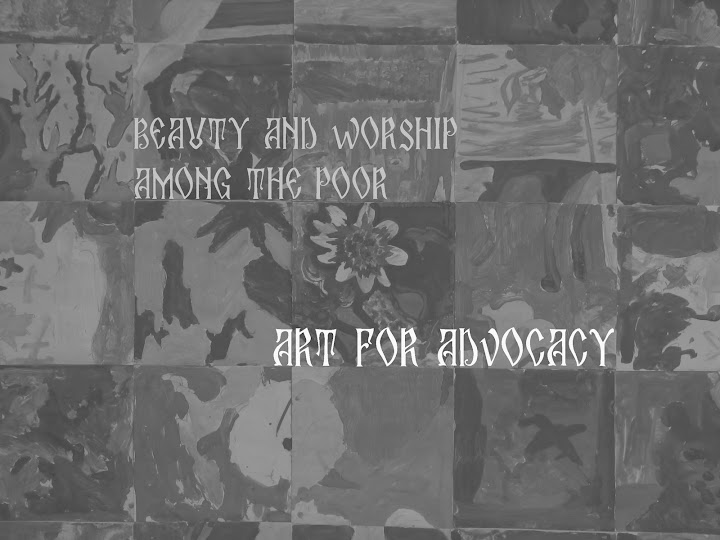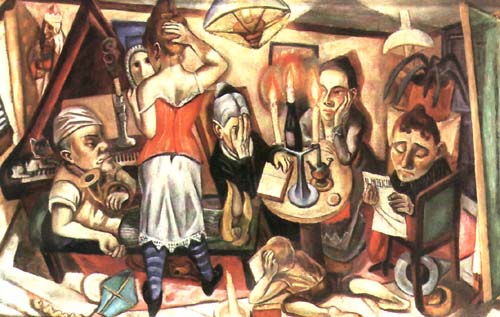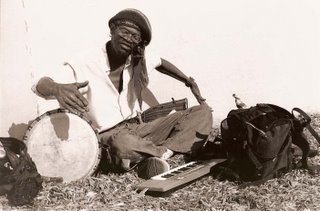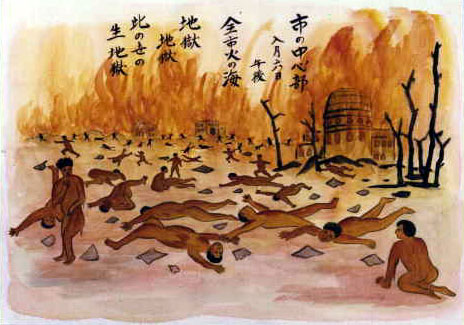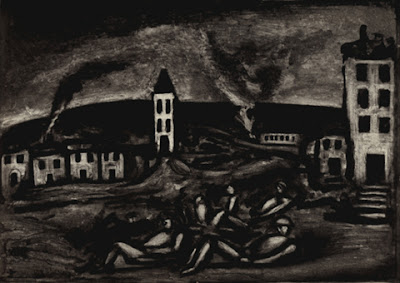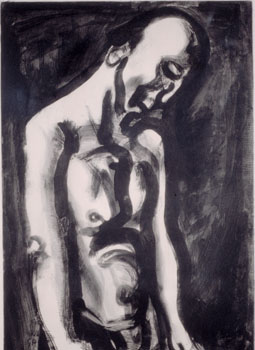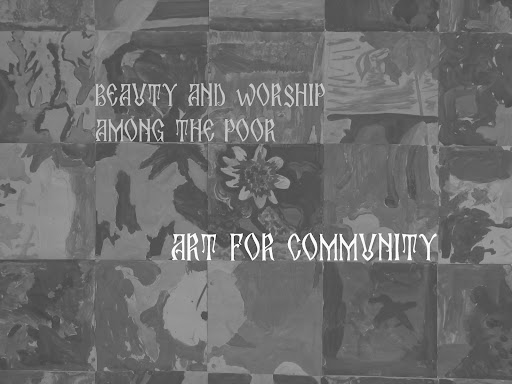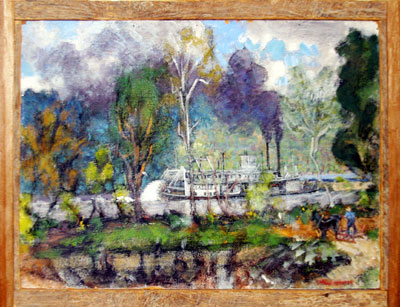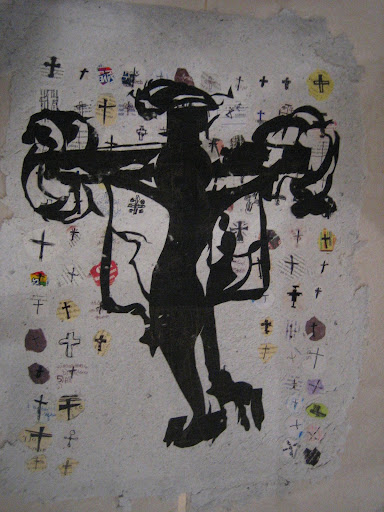I would like to talk about Advocacy as prophecy, 'as giving voice to the true under workings of the empire' as Walter Bruggemann might describe it. The story of David and Nathan the prophet show us how ‘story’/art can reframe life and give us an opportunity for personal insight and repentance. In a recent story I read a spiritual director was speaking with an eager young monk. The young monk was ready to receive his spiritual work assignment to help catapult him towards intimacy and union with God. his Spiritual director oddly asked the young monk to read Charles Dickens, David Copperfield. When the young monk complained of such a worldly assignment the spiritual director said that this young monk needed to learn empathy for normal people in normal life before he could journey into the depths of God.
Much of art is there to help us develop a basic empathy for our fellow human beings. When we sit in the others shoes for 200 pages we see the world different. I believe this is the heart of advocacy. No tricks, manipulation, no arm twisting, just getting to know people we usually are separated from through the mediums of art.
Meet Max Beckman. His painting exposed the Nazi oppression and got him exiled from Germany.
Guiernica, Picasso
Picasso put the city of Guiernica on the map with this devastatingly real depiction of the bombing of that city.
This is a photograph by Seth Allgire.
These are drawings done by survivors of Hiroshima. This is a great example of letting the victims tell their own story.
“…behind that frightened practice is a symbol gap in which we do not have symbols that are deep or strong enough to match the terror of the reality. What takes place when symbols are inadequate and things may not be brought to public expression is that the experience will not be experienced…’ p48 from The Prophetic Imagination
In the The National Story Project, we see a similar kind of amplifying of voices. This project gives air time to voices that would not ordinarily be heard. I am such there are many similar projects which could be designed to amplify voices of those we work among.
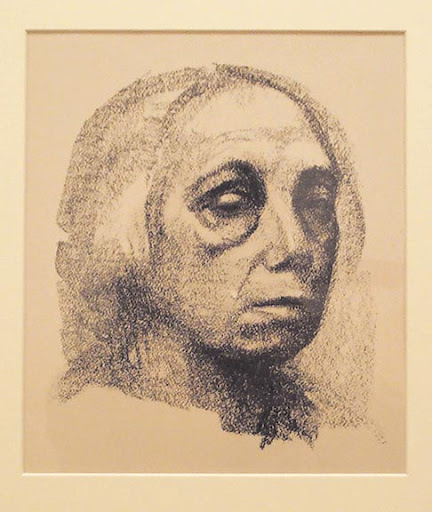 Kathe Kollwitz is another example of illuminating the jewish plight under the Nazi’s. She was a German lady who used wood block printing to print massive amount of pictures showing what was happening to the Jews. Her work is simple and stunningly human.
Kathe Kollwitz is another example of illuminating the jewish plight under the Nazi’s. She was a German lady who used wood block printing to print massive amount of pictures showing what was happening to the Jews. Her work is simple and stunningly human.
A more recent example of this kind of global advocacy is Francisco Botero's Abu Ghraib Paintings exposing the horrors of torture in US prison camps. He is giving voice to people who literacy have no advocate...no lawyer.
Kids with Cameras and our Sierra Leone fields, Beauty and Brokenness project in Sierra Leonne again put the cameras into the hands of the kids, letting us see through there eyes.
Georges Rouault, from the Miserere Series
Georges Rouault, from the Miserere Series
By allowing people to see the poor through a humanizing lens, a different angle, stories, songs, pictures, images which give names, face, personality, connect their humanity to ours and evokes a response to their dignity. We certainly do not need to be a Picasso or a Kollwitz to be used in such a way. If the process only helps the artist herself to w in empathy for her brother or sister it is worth all the time and attention given.
True Notebooks, by Mark Salzman gives an inside look at an Orange County Juvenile Detention Center. He combines his own writing describing his experience of teaching writting there as well as he writing of the kids. This is a nice combination of letting the kids speak for themselves and the writer giving voice to the subtleties of their lives.
This was the collaborative animation done with the kids at the Valley center. The hope was to show their beauty and personality. Let them read themselves some of their ideas and dreams.
We can think of advocacy terms of gathering the voices and songs of the poor, of all people. Here is its connection to worship. We gather them from the margins and as Christ does, we place the poor in the center with Him.
If our art starts and finishes in Advocacy, I am afraid it will be shallow and not do justice to the beauty of the world. I believe advocacy needs to be the last and almost unconscious byproduct of art for play and awe, of contemplative art, of art building and expressing the lives of our communities, and art for therapy which is helping us plumb the depths of our inner worlds. Advocacy needs to come out of a deep and long look at the world in all its horrors and beauties. And hopefully our advocacy in the end will be a celebration of isolated people coming together and seeing each other for the first time as fully human, beautiful, and created in the image of God.
'Beauty and Worship' Concluding thoughts…
Here are a couple considerations for worship music.
worship music = music+poetry+theology
If our worship is a sacrifice...we should consider studying the greatest music, the best theology we are aware of, and reading and understanding poetry. Most people complain about mediocre worship music. I don't see many considering higher level theological training, musical training, and poetry studies. It might help?
If worship is about the gathering of creation (into microcosm ourselves and community) and offering it back to God, liturgy ie the work of the people
Then the more we gather the more attentively we gather the scattered parts, voices, tonalities, rythmes, theological prayer experiences, etc, the more rich and beautiful will be our offering.
Let us expose ourselves to great art and great suffering and great theology and integrate it through reflection in art activities
Ideas for collaborative work.
Short international films (each using birds eye lense, moving left to right)
Books/ story telling (on chosen themes try to generate poetry and prose around an idea like distance separation, dark, light) get a range of kids parents, audio video reflections?
Blogging our work (formatts
Music (worship, narrative, or experimental)
“Collections” –Sarah said she likes to collect strange things throughout Calcutta. What if we all tried to collect photograph and reflect on the collections?
A WMF Art exhibit, installations sounds, impressions, voices, images, videos.
Inventions and ‘merge si asa’ documentation, ingenious ways people solve basic life problems. (ie. Drill gun for grinding eggplant)
- there are certainly many other ideas to be discovered.

